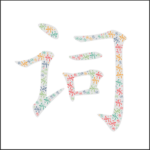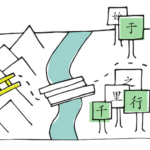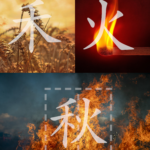Articles in the ‘Distinctively Chinese’ category Page 5
-
Do you have to learn to write Chinese characters by hand?
Chinese characters are beautiful, but they take a long time to learn, especially if you want to be able to write by hand. But do you actually need handwriting? When might you be required to write by hand? And are there any other benefits with handwriting that might make it all worthwhile?
Read → -
Are authentic texts good for learning Chinese or is graded content better?
Authentic texts not written specifically for second language learners are rich, varied, interesting and engaging, but they can also be terribly difficult and confusing. Should you use such texts for learning Chinese, or are you better off using content tailored to language learners?
Read → -
How to learn Chinese pronunciation as a beginner
Pronunciation is an important, yet often neglected part of learning Chinese. The earlier you get the sounds and tones down, the better, but how should you approach learning these things as a beginner?
Read → -
Learning Classical Chinese is for everyone (no, seriously!)
Classical Chinese is something all learners will encounter, whether it’s because it’s part of a course you take, because you’ve started learning formal, written Chinese or simply because you want to read the Art of War, the Analects or Tang poetry. How can you learn Classical Chinese and what resources should you use?
Read → -
A guide to Pinyin traps and pitfalls: Learning Mandarin pronunciation
When learning to pronounce Mandarin, you need to learn both the sounds and how they are written, usually with Pinyin. Did you know that many student errors actually come from a poor understanding of Pinyin, rather than the sounds themselves being difficult? Welcome to my guide to Pinyin traps and pitfalls.
Read → -
The building blocks of Chinese, part 6: Learning and remembering compound words
Compound words in Chinese can look confusing at first, but once you see the patterns, learning and remembering them becomes much easier.
Read → -
The building blocks of Chinese, part 5: Making sense of Chinese words
How many characters do you need to know to be able to read Chinese? The truth is that characters only provide a foundation, so regardless of how many you know, you won’t be able to read much unless you also know many words.
Read → -
Why spaced repetition software is uniquely well suited to learning Chinese characters
While spaced repetition software can be very useful, it also has some serious drawbacks. Fortunately, most of them don’t apply to learning to write Chinese characters!
Read → -
6 challenges students face when learning to read Chinese and how to overcome them
Learning to read Chinese comes with several challenges, some of them unique to Chinese. What are these challenges, what do they mean for you as a student and how can you overcome them?
Read → -
The building blocks of Chinese, part 4: Learning and remembering compound characters
The key to learning Chinese compound characters is to learn the building blocks and how they fit together, including both the function of each component and the structure of the compound. Add some clever memory techniques and you’ll be able to dramatically increase the speed and efficiency of your learning!
Read →









